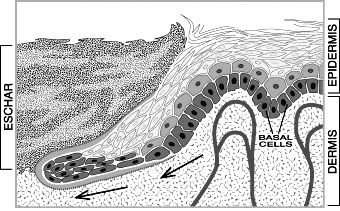Hi, I had four 15 min treatments, each two weeks apart, during the treatments the electrolysist worked on between my eyebrows and on my upper lip, I had slight redness for a few hours, used aloe for a few days and had no problems. I have recently moved and needed to find a new clinic, I found one with a school attached which also had great reviews, I went for a consultation and was very happy with the place, I went for 15mins treatment a week after the consultation on same areas again but this time after the treatment my eyebrow area was very raw and red like acne, I continued to use the aloe, i rang the clinic and they said to put savlon on it until it healed.
It took about 5 days before scabs started to appear and about 11 days for the scabs to start flaking off…I went back two weeks later and was told that it was normal and just how my skin in that area healed, but i didnt have the problem with my first four treatments? I was told to exfoliate, given a moisturising mask and told it should look normal in a few weeks. She worked on my lip on this 2nd appointment and I said i would wait till the eyebrow area had fully healed before considering it again, the lip area has healed fine with no scarring or marks but it is nearly four weeks now since the eyebrow treatment and I have about 12 very noticable red scars which are hard to even cover with makeup.
I have exfoliated with an elemis pomegranite exfoliation cream twice a week and use a antioxident rich moisturiser and also have increased vitamin c and e in diet. I dont know what else i could/should be doing. Does this sound normal? Its really getting me down now, Im sorry but i dont have a camera so cant supply pics…I know its probably impossible to give proper opinion. The girl who did the work was lovely and I am very happy with the upper lip area work she did but wondering why I didnt have these marks after four treatments on the area with another therapist? And also worried these might be permanent scars or am I just overreacting?

